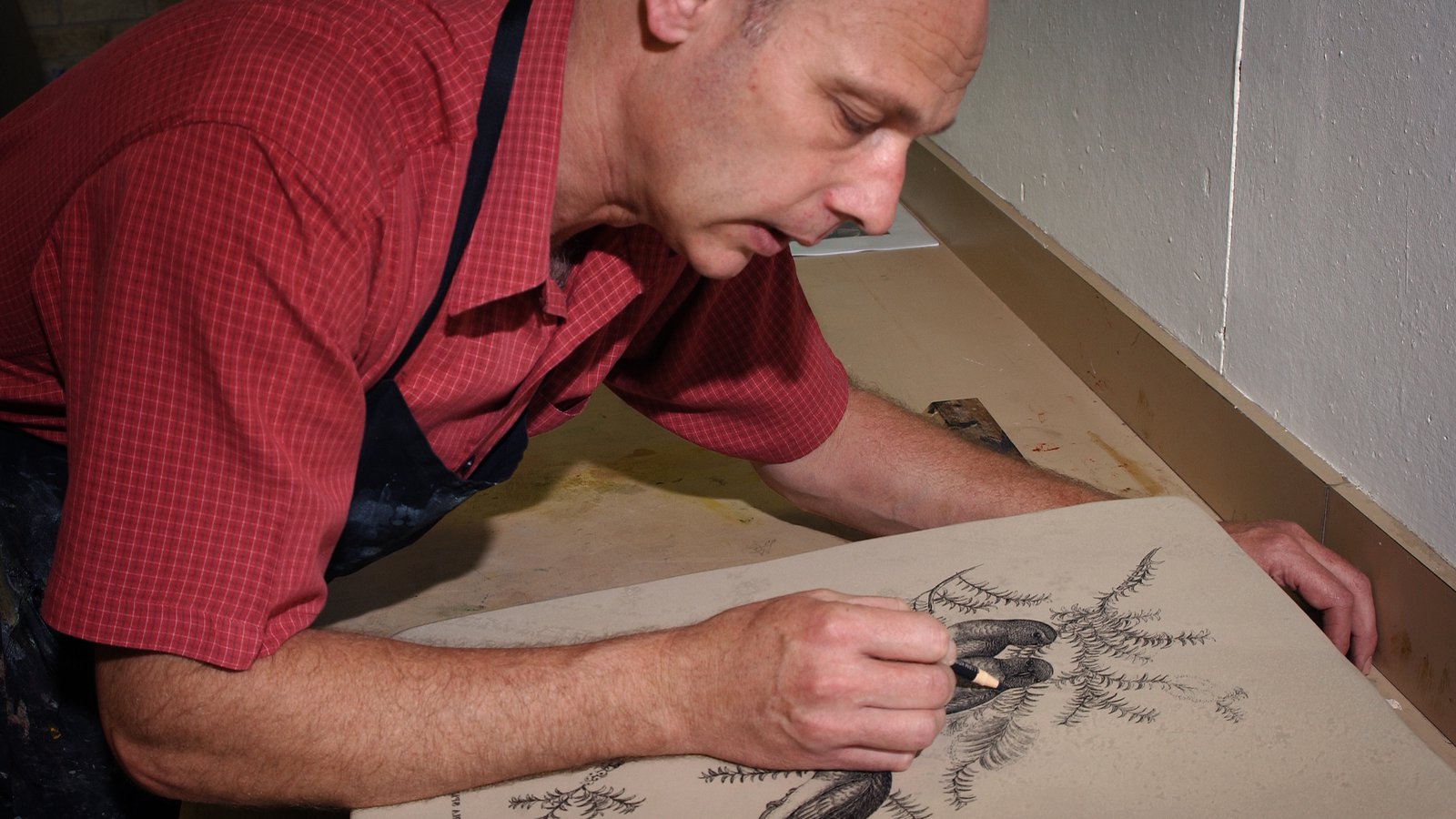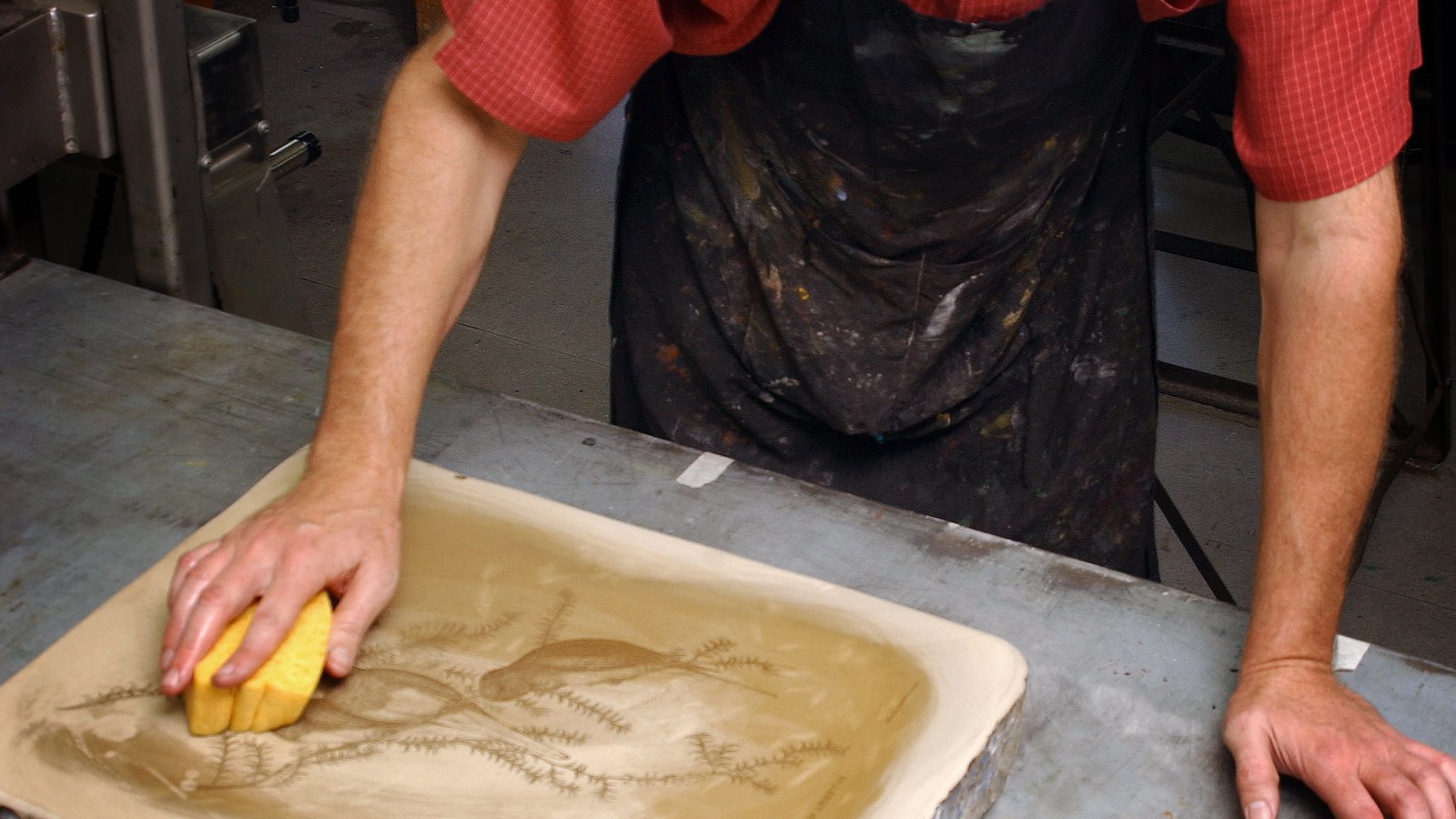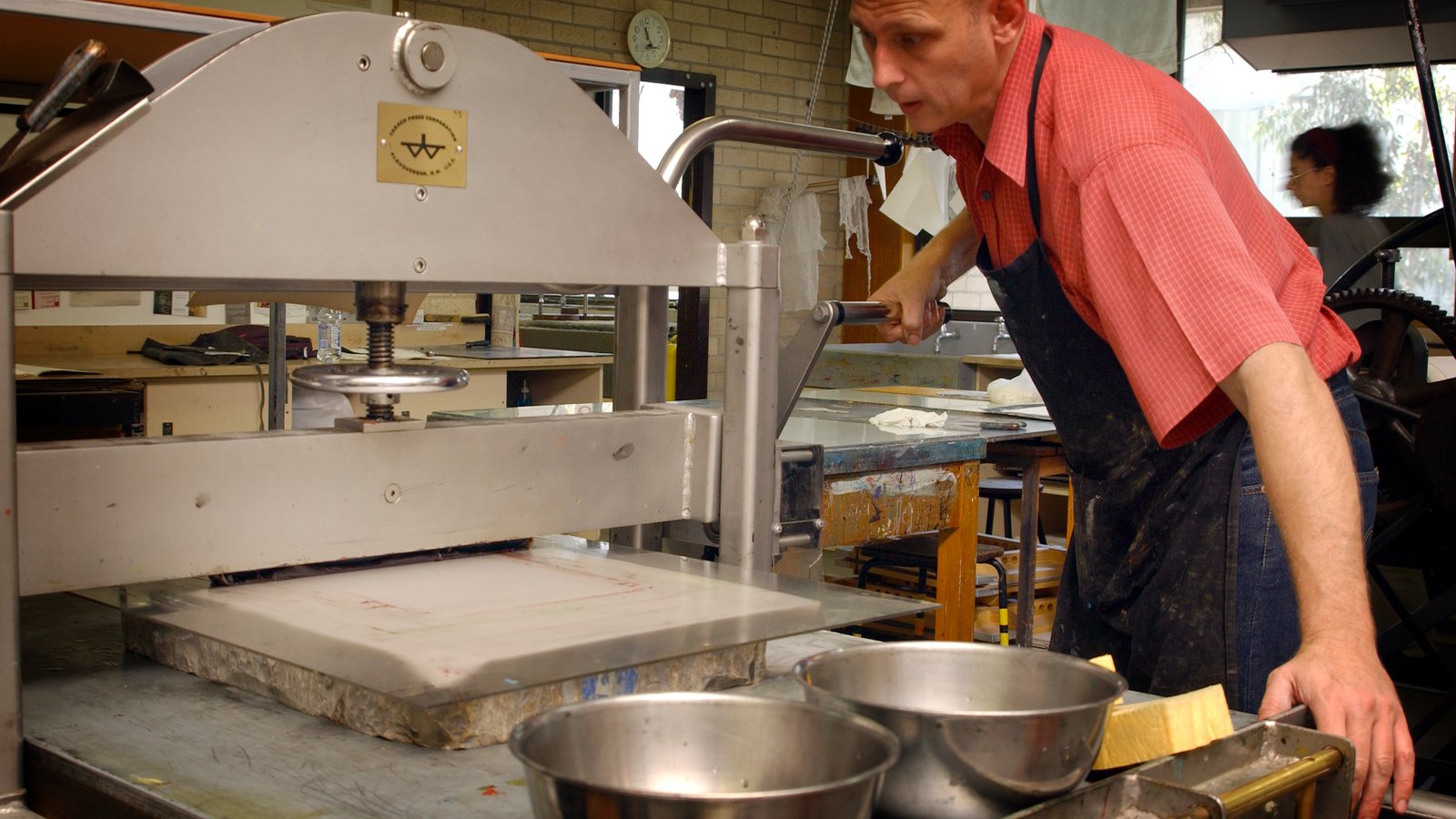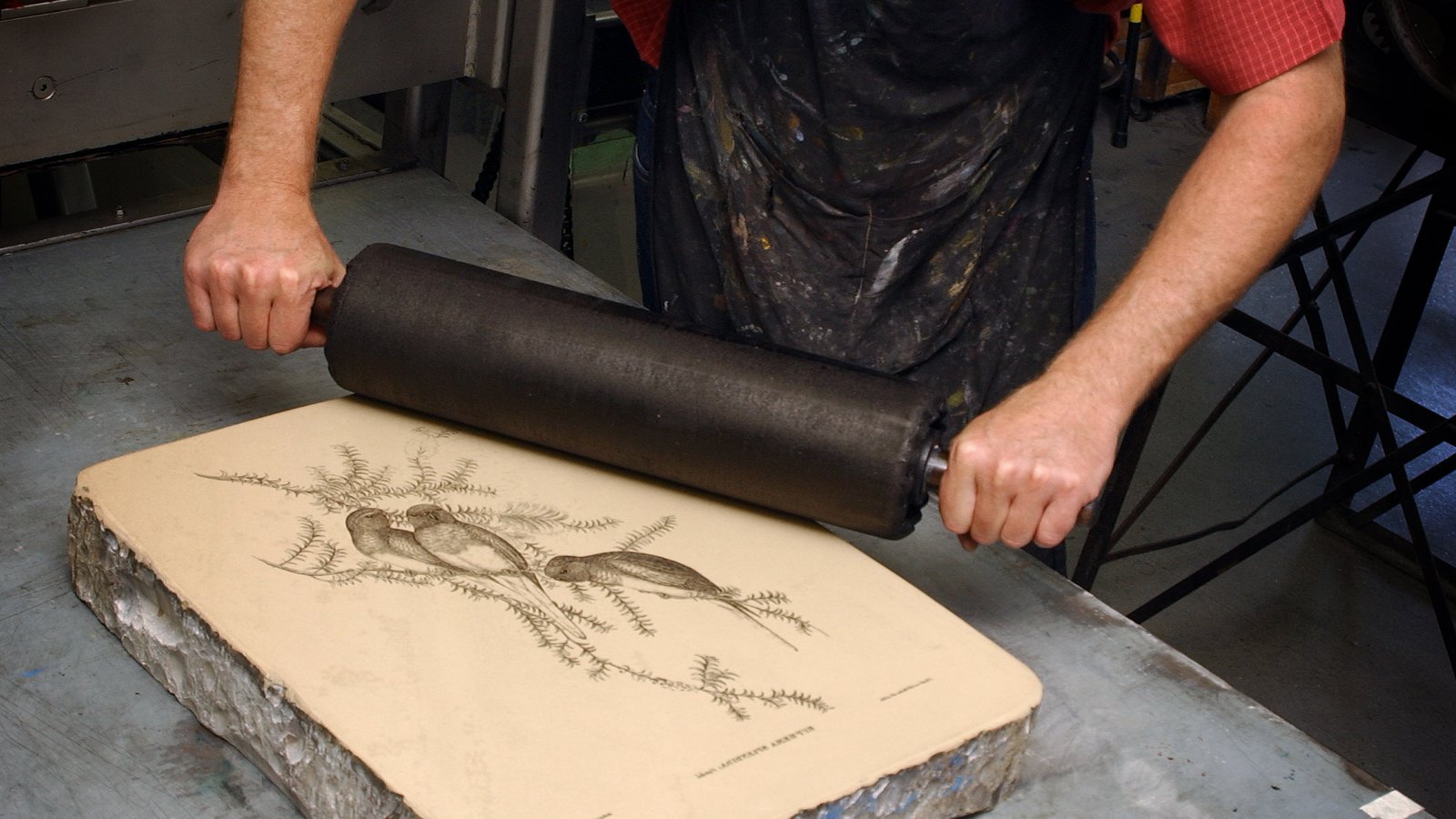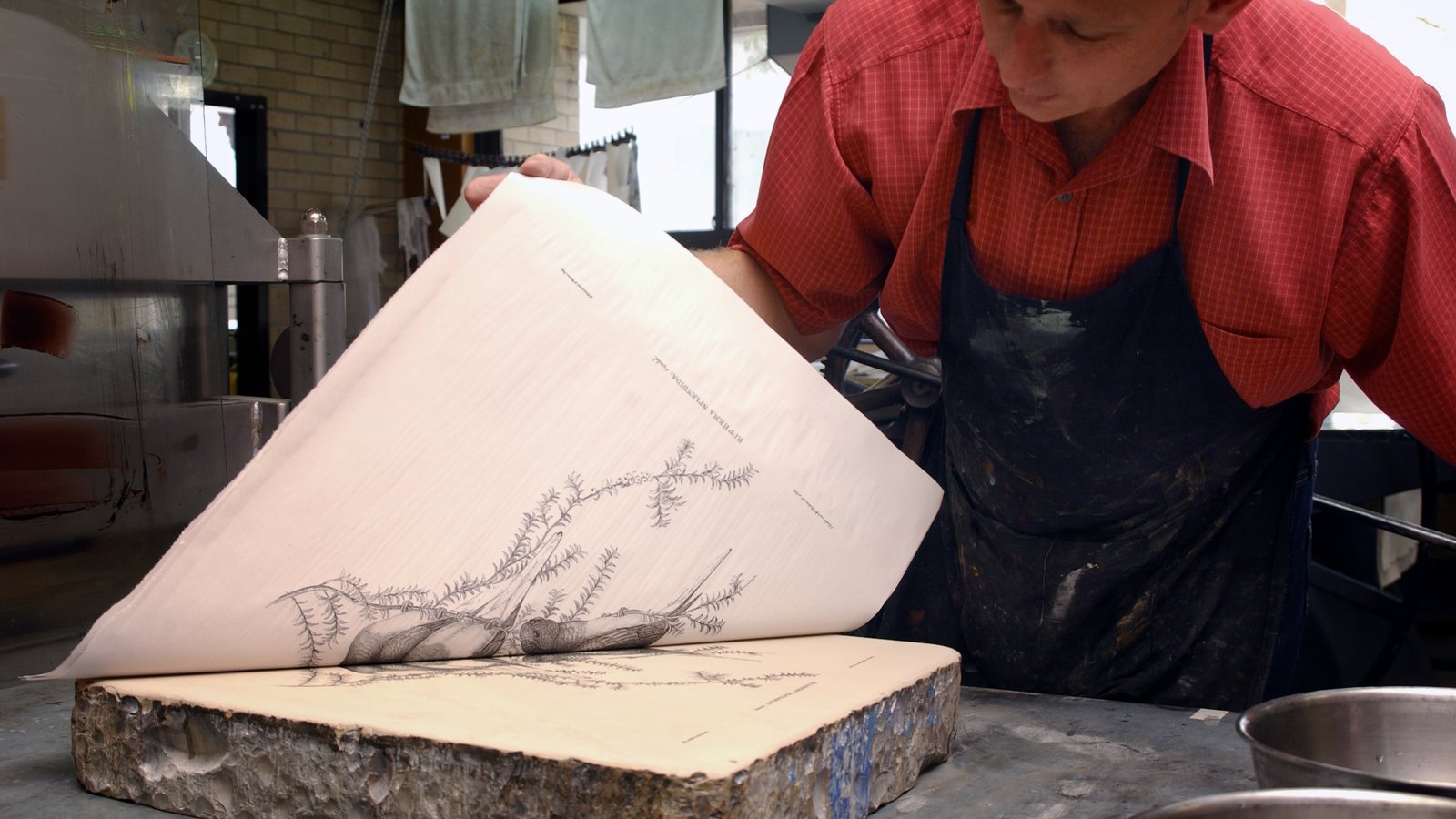Lithography in the time of John Gould
On this page...
What is lithography?
Lithography is the original form of planographic, or surface printing, based on the principle that oil and water do not mix but will attract like substances, and that both will adhere to a porous ground, such as a stone.
The principle of lithography was discovered in Germany in 1798 by Aloys Senefelder. The process came into widespread use in the 1820s as commercial printers and artists realised its many advantages.
An illustration could be drawn directly onto a highly polished chalky limestone block with special crayon pens. Lithography offered a new freedom to the artist or printer: drawing onto the stone was almost as natural an action as drawing onto paper.
After the greasy crayon was applied the block was washed with nitric acid and wiped with gum arabic. The stone was made wet, and the oily ink applied. The ink only adhered to the area of the greasy crayon, recoiling from the dampened section. The paper was then placed on the stone, run through a special printing press and the ink design transferred in reverse to the paper.
All methods of drawing could be used on the stone, including pen-and-ink, chalk, or crayon, and by about 1830 a watercolour-like wash, applied with a brush, was used to provide tints known as lithotints.
Although lithographs could be produced more easily, and generally more cheaply, than relief or intaglio illustrations, colour was still expensive since it had to be applied by hand and so was used only for relatively upscale coloured scientific and medical books.

A star-wheeled lithographic press
Image: -© Australian Museum
John Gould's lithographs
John Gould's relatively early adoption of lithography for his published works was probably dictated by economics rather than aesthetics. Gould's artists were able to draw directly onto stone to produce an image rather than pay an engraver to etch the artist's image onto a metal plate.
Gould chose to use lithography after seeing how successfully Edward Lear had used the technique in his illustrations of the Family of Psittacidae in 1830. Lear found lithography the perfect process for producing the softness he required for his depiction of feathers in his parrot illustrations and long, curving lines were easily drawn freehand. Lear believed that where the technique of etching failed because of the necessary stiffness of line, lithography offered him great freedom.
At Gould's request, Lear taught Gould's wife Elizabeth to draw on stone. Elizabeth Gould went on to produce 600 imperial folio-sized lithographed plates for some of Gould's major ornithological works.
Most of the stones were reused. The surface was sanded back to the smooth and highly polished surface required for drawing. However, some stones have survived with their drawings, with 12 stones still extant in the Ralph Ellis Collection at the University of Kansas Spencer Library. The stones are large, one measuring 560 x 432 x 37 mm, estimated weight 24.86 kg, and another measuring 530 x 432 x 42 mm, with an exact weight of 25.11 kg. In the collection there is a note apparently for a display of a stone, which states "The rock is Dusseldorf clay from the jurassic of north Germany - about 95,000,000 years."
Transporting these huge, soft limestones from Gould's home to the printer's and back must have been a difficult and expensive undertaking. Only the ease of drawing directly to the stone could have made this a viable proposition.
Charles Joseph Hullmandel (1789-1850) - Gould's first lithographer
Charles Joseph Hullmandel was one of the most significant figures in the development of British lithography in the first half of the 19th century. He and Anglo-German bookseller and printer Rudolf Ackermann were responsible for bringing the lithographic method to England; his surname Hullmandel appears on the imprints of thousands of lithographic prints.
Hullmandel refined the lithographic process, developing a method for producing gradations in tones and creating the effect of a soft wash of colour. This allowed for the reproduction of the romantic style of landscape made popular in England by J. M. W. Turner.
In 1824 Hullmandel published The Art of Drawing on Stone, an essential manual of lithography. Although Hullmandel was generous with his information on drawing on stone, he was careful not to describe the actual printing process, ensuring that it would be necessary for artists to come to him for this service.
Born in London, Hullmandel had a lithographic establishment in Great Marlborough Street from about 1819 until his death in 1850. Gould employed Hullmandel to print the lithographs for his publications. Illustrations were drawn on lithographic stones at Gould's home by Elizabeth Gould and other artists. The stones were then transported to the commercial printing house of Charles Hullmandel for the transfer from stone to paper. Hullmandel eventually printed most of Gould's 3000 plates.
Lithography in action
Lithography is the original form of planographic, or surface printing, and offered a new freedom to the artist or printer. The illustration could be drawn directly onto a highly polished chalky limestone block with special crayon pens. Drawing onto the stone was almost as natural an action as drawing onto paper. This photo gallery shows the lithographic process as it would have be used in the time of John Gould. Demonstrating the technique is Rew Hanks, Australian contemporary artist and printmaking teacher. Courtesy of Sydney Gallery School at Meadowbank TAFE.
Photos by Stuart Humphreys.





